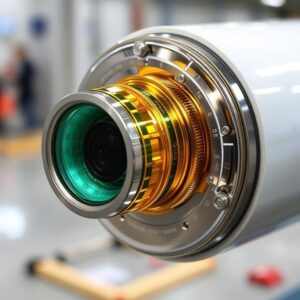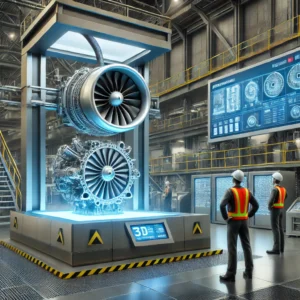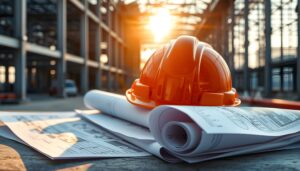How 3D Printing Reduced Production Costs in Aerospace: Cases Stdies

Explore how 3D printing has transformed aerospace production by reducing costs, shortening lead times, and enabling innovative designs. This case study examines key projects and the technology’s potential benefits for industry leaders.”
Introduction to 3D Printing’s Impact on Aerospace
The aerospace industry is known for its high standards of precision, safety, and durability. This industry has traditionally relied on complex manufacturing processes, high-quality materials, and a vast network of suppliers to meet stringent regulatory requirements. Consequently, producing aerospace components often comes with substantial costs and extensive lead times. Complex parts, specialized materials, and intricate assembly processes contribute to high manufacturing expenses, making cost reduction a priority for aerospace manufacturers worldwide.
Traditional Manufacturing Challenges in Aerospace
Traditional aerospace manufacturing involves various complex methods, such as casting, forging, and CNC (computer numerical control) machining, to shape metals and other materials. Each of these techniques has its own advantages, but they also come with limitations in terms of waste, complexity, and cost. Casting and forging, for example, require molds and tooling setups, which can be costly and time-consuming to create, particularly for complex parts. CNC machining, while highly precise, is a subtractive process that often results in a significant amount of wasted material, especially when producing parts with intricate geometries.
These traditional processes also require extensive post-processing and assembly, adding further costs and time to production. With the need for lightweight materials in aerospace, manufacturers often use high-cost metals such as titanium and specialized alloys. Additionally, aerospace production often requires numerous parts and components, leading to complex supply chains and increased reliance on various suppliers for components and raw materials. Each of these factors has traditionally driven up costs in aerospace manufacturing, prompting the search for more efficient solutions.
3D Printing as an Innovative Solution
Three-dimensional printing, or additive manufacturing, has emerged as a game-changing technology in aerospace manufacturing. By building parts layer by layer from digital models, 3D printing minimizes waste, reduces the need for multiple suppliers, and allows for more efficient production of intricate designs. Additive manufacturing provides greater flexibility in design, enabling manufacturers to produce parts with internal structures that improve performance while reducing weight—a crucial factor for the aerospace sector, where every gram saved translates into fuel efficiency and cost savings.
Unlike subtractive manufacturing methods that remove material, 3D printing only uses the amount needed for each part, resulting in less waste and better utilization of expensive materials. This shift from subtractive to additive processes has proven transformative for aerospace, enabling engineers to reimagine the way parts are designed, produced, and assembled.
Cost Savings and Efficiency in Aerospace
The advantages of 3D printing in aerospace extend beyond production flexibility. Aerospace companies are using 3D printing to cut costs in areas such as material efficiency, storage, and labor. With reduced material usage, fewer assembly steps, and the ability to produce parts on demand, aerospace manufacturers can decrease overall production costs significantly. This article will delve into real-world examples of how major aerospace players like GE Aviation, Boeing, and NASA have harnessed 3D printing to streamline production, reduce costs, and achieve innovative design possibilities.
Case Examples: GE, Boeing, and NASA’s Adoption of 3D Printing
Several aerospace industry giants have successfully integrated 3D printing into their production processes, providing valuable case studies of the technology’s potential. Each organization has approached additive manufacturing with unique goals and applications, from streamlining complex parts to reducing production timelines.
GE Aviation: The LEAP Fuel Nozzle
GE Aviation’s use of 3D printing for its LEAP fuel nozzle is one of the most well-known success stories in aerospace additive manufacturing. Traditionally, fuel nozzles are intricate components that require multiple parts and assembly. The LEAP fuel nozzle used in CFM International’s LEAP jet engines required around 20 separate parts that were welded and assembled.
Process and Material Selection
Using 3D printing, GE was able to consolidate these 20 parts into a single component. The company used metal 3D printing with advanced nickel-based superalloys, known for their heat and corrosion resistance—both critical qualities for aerospace applications. GE’s choice of materials ensures that the fuel nozzle withstands the extreme temperatures and pressures inside a jet engine. With 3D printing, GE can manufacture the nozzle as a single piece, eliminating the need for complex assembly and reducing potential points of failure.
Benefits of 3D Printing for the LEAP Fuel Nozzle
The benefits of using 3D printing for the LEAP fuel nozzle are numerous. First, it results in a lighter component, which contributes to overall fuel efficiency in the aircraft. The single-piece design also means fewer production steps, reducing the chances of assembly errors and increasing the nozzle’s durability. The process is faster than traditional manufacturing methods, as it eliminates tooling and extensive labor hours.
Cost Impact of GE’s Approach
GE Aviation estimates that it reduced production costs for the fuel nozzle by as much as 50% due to material savings, shortened production timelines, and fewer assembly requirements. This substantial cost reduction has enabled GE to produce the nozzles more quickly and efficiently, allowing them to meet high demand while maintaining strict quality standards. As a result, 3D printing has provided GE with a competitive advantage in the aerospace industry, both in terms of cost efficiency and performance.
Boeing’s Use of 3D Printing in Structural Components
Boeing, one of the world’s largest aerospace manufacturers, has embraced 3D printing to produce structural and functional components for its aircraft. The company has integrated 3D-printed parts in several models, including the 787 Dreamliner, to reduce weight and streamline production.
Examples of 3D-Printed Parts at Boeing
Boeing has utilized 3D printing to produce a range of components, from brackets and air ducts to seat frames and even non-critical structural parts. These parts, though seemingly minor, contribute significantly to the aircraft’s overall weight. By using lightweight thermoplastics and high-strength metal alloys, Boeing has successfully reduced the weight of individual components while maintaining their structural integrity.
Materials and Techniques Used
Boeing uses a variety of materials for 3D printing, including advanced thermoplastics like ULTEM 9085, known for their flame-retardant properties and high strength-to-weight ratio. Boeing has also invested in metal additive manufacturing for components that require additional durability, using metals like titanium and Inconel to produce lightweight but sturdy parts.
Cost and Weight Savings from 3D Printing
Reducing the weight of each component allows Boeing to achieve better fuel efficiency for its aircraft, leading to operational cost savings over the lifespan of each plane. The lightweight parts also reduce material usage, cutting down on raw material costs. Additionally, the rapid prototyping capabilities of 3D printing allow Boeing to test and iterate designs more quickly, reducing research and development costs and accelerating time to market.
NASA’s Use of 3D Printing for Space Exploration
NASA has also embraced 3D printing to address unique challenges in space exploration. From the production of complex engine components to the creation of parts aboard the International Space Station (ISS), 3D printing has enabled NASA to reduce costs and improve functionality in extreme environments.
Advantages of 3D Printing for Space Missions
In space, resupply missions are costly and time-consuming, making it essential to produce components on demand. By using 3D printing, NASA can create necessary parts in space, reducing reliance on Earth-based supply chains. This capability is especially valuable for long-term missions, where carrying a wide variety of spare parts would add weight and cost.
Case Study: 3D-Printed Rocket Engine Components
NASA has successfully tested 3D-printed parts in rocket engines, including injectors and combustion chambers, which are subject to extreme conditions. These tests have demonstrated that 3D-printed components can withstand the rigorous demands of space missions while providing cost and time efficiencies.
Cost Savings and Design Flexibility for NASA
The reduced production times and decreased material waste have allowed NASA to allocate resources more efficiently. Additionally, the ability to produce complex geometries that would be challenging or impossible to machine has opened up new possibilities for spacecraft design, allowing engineers to explore innovative solutions.
Cost Reduction and Production Efficiency Insights
One of the most significant advantages of 3D printing in aerospace is the potential for cost savings across multiple areas. From material efficiency to labor reduction, 3D printing has proven to streamline production processes, reduce waste, and lower overall expenses.
Reduced Material Costs
3D printing reduces material costs by building parts layer-by-layer, which uses only the material required for each component. Unlike traditional manufacturing methods that generate substantial waste, additive manufacturing is highly efficient, particularly with expensive materials like titanium and nickel alloys commonly used in aerospace.
Material Efficiency and Waste Reduction
In traditional manufacturing, excess material is often discarded or repurposed, adding costs and logistical considerations. 3D printing minimizes waste by using near-net-shape manufacturing, meaning parts are produced closer to their final dimensions, reducing the need for machining and other finishing processes. Aerospace manufacturers like GE Aviation report significant material savings from 3D printing, which translates into cost reductions and a more sustainable production model.
Examples from GE and Boeing
GE’s experience with the LEAP fuel nozzle exemplifies how material savings can translate into overall cost reductions. Boeing has also reported substantial material efficiency gains from its use of thermoplastics and metal 3D printing, which help decrease production costs and environmental impact.
Minimized Inventory and On-Demand Production
3D printing enables aerospace manufacturers to produce parts on demand, reducing the need for large inventories and allowing companies to print only what is needed when it is needed. This on-demand production model is particularly beneficial in aerospace, where spare parts can be costly to store and maintain.
Reduced Storage Costs and Lean Inventory Management
By producing parts as required, companies can reduce the need to store expensive raw materials or finished components. This results in cost savings from less inventory management and fewer logistics expenses. Furthermore, this approach allows manufacturers to be more agile and responsive to changes in demand or production requirements.
Flexibility in Production
3D printing’s ability to quickly produce prototypes and customized components has also allowed manufacturers like Boeing to improve production flexibility. Engineers can test new designs, modify parts quickly, and print updated components in a matter of hours, significantly shortening lead times and enabling faster product iterations.
The integration of 3D printing in aerospace manufacturing has dramatically reduced costs, improved production efficiency, and introduced new possibilities for innovation. By eliminating material waste, reducing production time, and allowing for complex designs, additive manufacturing has provided aerospace companies like GE, Boeing, and NASA with a competitive edge. As technology continues to evolve, the aerospace industry is poised to reap even greater benefits from 3D printing, particularly as materials and printing techniques advance.
With 3D printing, the aerospace industry has moved from a model of high costs and long lead times to one of efficiency, innovation, and cost reduction. The success stories from GE, Boeing, and NASA show that additive manufacturing is not just a passing trend but a critical technology that is here to stay. As the industry embraces this technology, we can expect even greater advances in cost savings, production speed, and design flexibility, leading to a more efficient, sustainable, and cost-effective aerospace industry.





